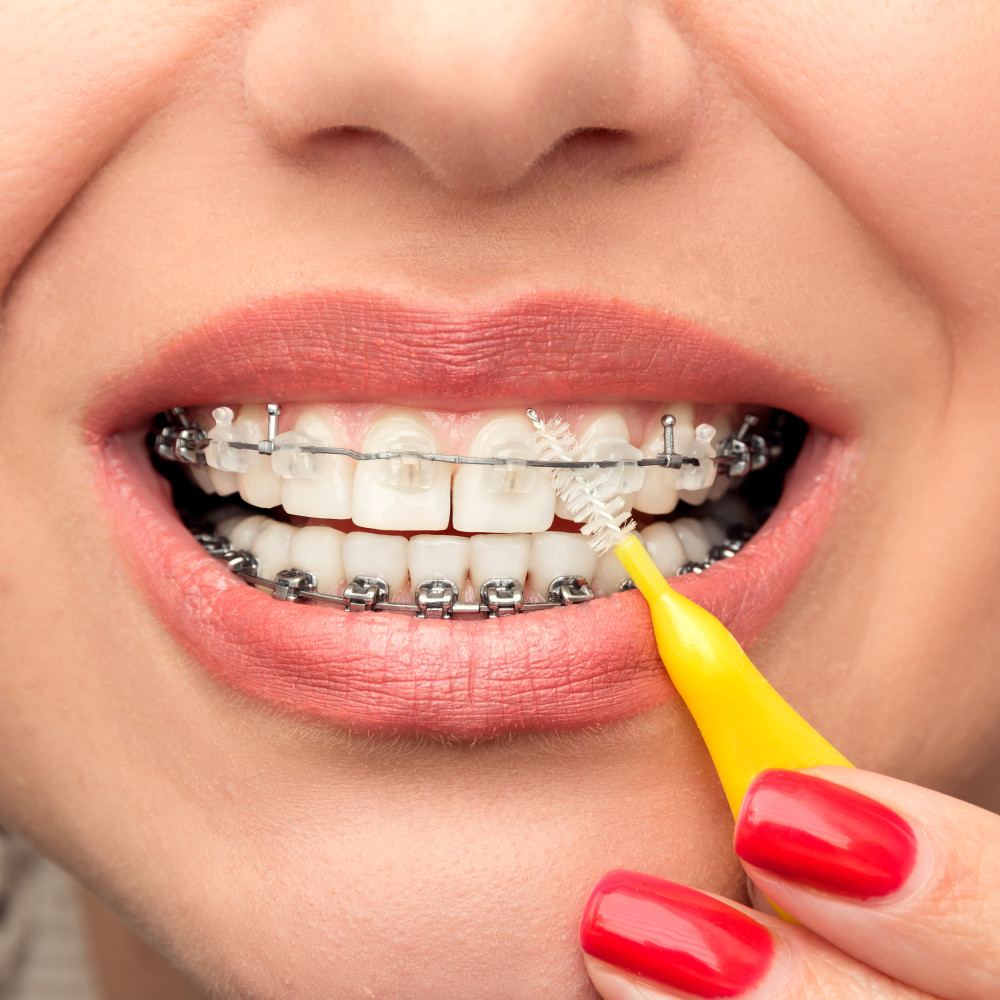3 Tips for Flossing with Braces on Your Teeth
If you just had braces put onto your teeth, then you may be wondering how you will be able to floss with all of those wires and brackets in your mouth. The truth is that flossing with braces will likely take more time than you spent flossing without them, but this extra time spent will be well worth it in the end when your braces are taken off and, along with having a new straight and beautiful smile, you also still have a healthy one!
Now that you have braces, flossing is actually more important than ever. Those brackets and wires can collect a lot of food particles while you eat. Flossing to remove food residue left behind after brushing is very important to prevent cavities, gum disease, and white spots that can develop around braces brackets that are caused by bad dental hygiene habits while wearing braces.
Now that you know how important flossing is when wearing braces, read on to learn three tips for flossing with braces on your teeth.
1. Choose Waxed Floss and Use a Floss Threader
First, you must learn the technique required to thoroughly clean plaque that can accumulate between your teeth and under your gum line. Instead of simply sliding the floss between your teeth, as you did when you didn’t have braces, you must carefully slide it under your arch wire before sliding it gently up and down the sides of both of your teeth.
“Make sure to give the floss a good “wiggle” when it reaches your gum line, because this removes plaque from under the surface of your gum line; if this plaque is not removed, your gums can become inflamed and, over time, it can lead to gum disease,” said CHT Orthodontics.
It is important to choose wax floss instead of unwaxed, because unwaxed floss can get stuck in your braces brackets much more easily. In addition, a floss threader is a great addition to your dental-care arsenal, because it can help you insert the tip of the floss under your archwire much more easily.
A dental professional made this great youtube video demonstrating how to floss when wearing braces and how to use a floss threader.
While you may find the first few times you floss while wearing braces a little time consuming, remember that the more you floss, the easier it will get.
2. Use an Interdental Brush Before Flossing
To make flossing easier and more effective, you should try your best to remove stubborn food particles stuck in or around your braces wires and brackets before you floss.
While not a substitute for brushing with a manual toothbrush or flossing, using an interdental brush as the second step of your dental care routine can help you keep your teeth clean and healthy.
An interdental brush is a small thin brush with a handle. It is about the width of a pipe cleaner. The brush head is typically bendable, so you can angle it to remove those stubborn food particles.
This device is also great to use clean the area where your brackets meet your teeth. Neglected plaque here can lead to hypomineralization spots, which would appear as white marks around where your braces brackets were once your braces are finally removed.
3. Try a Water Flosser
Water flossers have been shown in studies to remove just as much plaque from between teeth as typical dental floss does, and they also have the added advantage of also removing much of the stubborn plaque left on tooth surfaces after brushing. In fact, many dental professionals think that using a water flosser is another great way to prevent post-braces hypomineralization spots.
While water flosser do project strong streams of water, but thankfully, the stream is not strong enough to bend your braces wires or cause brackets to come loose. However, never force the hard tip of the flosser under braces wires and only allow the stream of water in contact with your braces; forcing the tip under wires could loosen them or cause them to break.
If you just had braces put on your teeth, then you want to maintain great dental hygiene habits to make sure that your teeth and gums are just as healthy when your braces are removed as they are now. Since flossing is such an important step in your dental hygiene routine, follow these three tips for flossing with braces on your teeth to ensure you are flossing effectively and without damaging your braces.

















